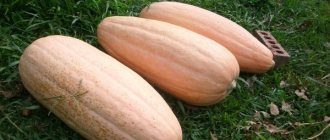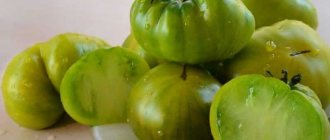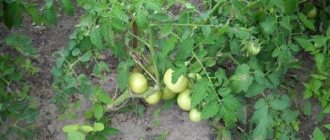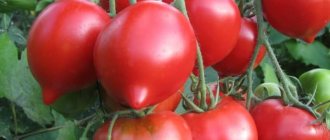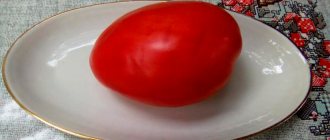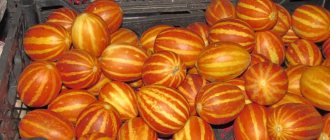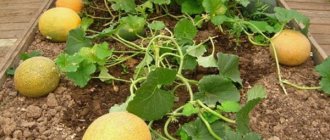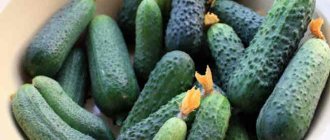Description of the melon variety
The heat-loving crop ripens within 80-90 days from the moment the first shoots appear. It is planted in seedlings.
Distinctive features
The fruits ripen in compact beds. The melons are small, so there is no need to tie up the plant. Vietnamese is suitable for growing in small beds. The main thing is that the land is fertile. The plant is immune to diseases and insect pests.
Composition and properties
100 g contains only 34 kcal, so melon is used to make dietary sweets.
The pulp of the fruit is also used for cosmetic purposes - masks, tonics and facial lotions are prepared from it. Melon juice smoothes out fine wrinkles, makes the skin radiant and elastic.
The product contains:
- B vitamins, which are essential for eye health;
- vitamin C, which strengthens the immune system and has an antiviral effect;
- dietary fiber, which activates digestion and metabolic processes.
The product also contains calcium, phosphorus and iron.
Fruit characteristics and yield
Round melons have a smooth, striped skin. Their color is yellow-brown. The weight of the fruit varies from 100 to 200 g. The pulp is orange, with a milky tint, sweet and honey-like. Summer residents remove up to 15 fruits from one bush.
Varieties
Before you start cultivating any variety of Vietnamese melon, you will need to understand the varieties, advantages and characteristics of this crop.
The most popular are 2 varieties:
- Yan Jun;
- A gift from Ho Chi Minh's grandfather.
Gift from Ho Chi Minh's grandfather
A gift from Ho Chi Minh's grandfather, it is an early ripening plant, grown in open areas, and also produces a good harvest in greenhouse conditions. The fruits are small, about 200 g. Due to the fact that this variety has an unusual appearance, it is often used to decorate gazebos and enclosing structures.
Yan Jun
Yan Jun is a mid-season Vietnamese melon. It gives a big harvest. The first fruits appear 1-2 months after planting the seeds. The fruits of this variety weigh between 200-400 g. The fruits are endowed with a pleasant aroma and excellent taste.
How to grow a variety yourself
Melon cultivation requires basic knowledge and skills. Vietnamese melon is grown by seedlings. Seedlings are prepared at the end of March. Let's take a closer look at what is needed for this.
Planting and growing seedlings
Seedlings require seeds, a seedling container and soil. They buy all this in specialized stores or use improvised means.
When growing seedlings, follow these recommendations:
- For planting, select large seeds: they need to be disinfected with a solution of Bordeaux mixture.
- Soak the seeds overnight in warm water with the addition of a growth stimulator. The seeds will swell, the stimulant will strengthen their immunity.
- Harden the material in the freezer by placing the seeds in it for 10 hours.
Peat tablets or pots, cardboard boxes, and flower pots are used as containers. The container is washed with soda and filled with earth. The depth of the holes for planting is at least 1 cm.
Place 2 seeds in each, cover with soil and slam down. Immediately after this, water generously with warm water. The next time the seedlings are watered only after 6 days.
Important ! For melons, use a mixture of soil from the garden and soil from the store. Take equal parts and add peat, humus and river sand as a natural leavening agent. The soil is placed in the freezer for a day - low temperatures destroy larvae and microbes.
Planting in the garden and caring for melons
Seedlings are planted in May after the last spring frosts. The best predecessors for Vietnamese are cabbage, legumes, onions, herbs, potatoes or peppers. It is not recommended to plant melon after melons - watermelons, pumpkins or other melon varieties.
The beds are dug up to the full extent of the shovel, cleared of leaves and debris, and large clods of earth are broken up. Vietnamese planting pattern - 70x70. The seedlings are carefully moved into the holes and sprinkled with earth. The bushes are covered with film until the first three leaves appear.
Water the melon as the soil dries. Use water that has been preheated in the sun. Once every two weeks, instead of water, use nettle infusion or Bordeaux mixture - they improve the taste of the fruit and strengthen the immune system.
Two weeks after planting, the first feeding is organized. Saltpeter, superphosphate, and the mineral complex “Magic Leika” or “Zdraven” are added to the beds. The interval between feedings should be at least 15 days.
Important ! Manure, humus, compost, and bird droppings are used as organic fertilizers. Thanks to organic matter, shoots and leaves become healthy and strong. Add food after watering.
Features of cultivation and possible difficulties
Before each watering, the soil is loosened. The procedure saturates the earth with oxygen, which has a positive effect on the development of the root system.
After loosening, the bushes are hilled up and sprinkled with peat chips. As soon as 5 ovaries are formed on one stem, the top of the plant is pinched. Pinching will speed up the ripening time, the fruits will grow large and sweet.
Pay close attention to the amount of mineral fertilizers. Nutrition should be balanced. A lack or excess of elements leads to disease and drying out.
Vietnamese melon needs:
- Nitrogen - stimulates the growth and development of plants. If it is deficient, the plant withers.
- Potassium - protects melon from diseases and pests, strengthens the immune system, and is involved in fruit set and formation. An excess of potassium leads to yellowing of the leaves.
- Phosphorus - strengthens the roots and saturates them with nutrition. Due to a lack of phosphorus, melon develops root rot.
Diseases and pests characteristic of the variety
Among the diseases, tobacco mosaic is noted. It appears as a yellow pattern on the leaves. The virus disrupts metabolic processes, slows down the development of ovaries and fruits. Appears both on young seedlings and on adult plants during the fruiting period.
The cause of the disease is contaminated soil, sudden temperature changes, and improper watering. As a preventive measure, the bushes are sprayed with a solution of iodine or onion peels. For treatment, the drug “Quadris” or “Maxim” is used.
Another disease is fusarium wilt. Causes of occurrence: an excess of mineral fertilizers or non-compliance with crop rotation rules. The plant becomes covered with a gray coating, the fruits lose their taste and become deformed. For prevention, spraying with Bordeaux mixture or HOM is used.
Important ! The melon fly and melon aphid love to eat melon. Small midges suck nutritious juice from the leaves, and the bushes do not have enough strength to develop. They get rid of pests using the drugs “Iskra” or “Maxim”.
Useful tips for growing
It is important to carefully monitor the condition of the fruit. If the melons remain in the same mass for a long time or change color, then additional feeding is necessary. To protect fruits lying on the ground from moisture and pests, it is necessary to place a piece of plywood or a wooden plank under the melon
It’s better to grow melons on trellises. The fruit is ripe if it is well separated from the stalk. And the fruit is ripe if the pubescence has fallen off. It is better to water melons in the morning so that the soil warms up well before the evening. If at the time of frost there are still unripe fruits on the vines, then they need to be cut off along with the stalk and placed in a dark, cool place to ripen. It is strictly not recommended to touch growing melons with your hands. The slightest damage leads to rotting and death of the fetus. Harmful insects will be repelled from the plant by dill growing nearby.
Vietnamese melon is not only very tasty, but also incredibly healthy. It contains a large amount of fiber, which helps reduce cholesterol levels in the body. Melon is also rich in folic acid and all kinds of microelements. The fruits help the gastrointestinal tract, improve appetite, and help with pancreatitis and gastritis.
Our siblings are just learning the science of growing Vietnamese melon.
20.02.18,Varvara Plyushkina,
Novosibirsk, photos from open sources, unless otherwise noted.
melons Other articles by the author
- Pumpkin in the garden
- Country know-how from siblings
- Growing seedlings of tomatoes, peppers, eggplants
(24/11/2018)
Krymtsova Lyubov (Guest)
Love, how can I contact you about seeds?
(29/09/2018)
I brought melons from Abkhazia to Pskov. I produced a lot of seeds. I can share.
(02/03/2018)
Gardening in Russia is very expensive; three seeds cost sixty rubles.
(01/03/2018)
Russian gardens sell seeds, I hope they won’t regard them as advertising.
(01/03/2018)
Looks like a big gooseberry)
(27/02/2018)
Gusev had an offer in the winter, but I didn’t have time. We have to keep watch.
(27/02/2018)
I don't know where they sell it. But here, at the country market, UV sold seeds.
(27/02/2018)
Where do they sell seeds or seedlings of this wonderful melon?
(27/02/2018)
We have time to ripen, it can be eaten in August. This girl was sown late. They will sing even on the street, and even more so in a greenhouse. We sow for the greenhouse in the last days of March.
1 |
Harvesting and application
The ripeness of Vietnamese is determined by its honey aroma and firm peel. The fruits should be elastic, the stalk should be dry. When struck lightly, a ripe melon produces a dull sound. The early ripening variety is not suitable for storage; the fruits are consumed immediately after harvest.
Smoothies, jam, and jelly are made from melon. Its taste goes harmoniously with other fruits and berries - watermelon, pear, bananas, apples.
Vietnamese is also used for preparing salads and side dishes. Housewives prepare a salad with chicken fillet, melon pulp and avocado, or make the famous Italian appetizer of melon and Parma ham.
Interesting . Roasted melon seeds are a common snack in African cuisine.
Pests
Vietnamese melon is susceptible not only to diseases, but also to pests. Therefore, these risks should be considered in more detail.
melon aphid
The melon aphid is considered a small pest that attacks the underside of leaves and stems. It multiplies quickly and prefers to feast on the juice of leaves and stems. Leaves damaged by aphids turn yellow, curl, dry out, and flowers fall off.
To prevent melon aphids from infecting the plant, the area needs regular weeding and weed control. The melon is treated (before it begins to bloom) with Karbofos (10%) or a soap solution (after flowering) 10 g per 10 liters of water.
Spider mite
The fact that the plant has been infected by spider mites is evidenced by thin cobwebs in the axils of the foliage.
Measures to combat spider mites:
- weed out weeds;
- dig the ground deeply in the fall;
- perform crop rotation correctly.
Wireworms
These pests are the larvae of click beetles that attack the lower part of the stem, causing the plant to die.
To overcome wireworms, you need to regularly weed the melon and remove all remnants of vegetation.
Gnawing cutworms
Cutworm caterpillars live deep in the soil or on its surface. They harm the melon by attacking the stem. Because of this, the plant dries out. To get rid of gnawing armyworms, weeds are destroyed, the soil is loosened in the fall and crop rotation is performed.
Melon fly
The main enemy of this plant is the melon fly. It can affect up to 50% of the crop.
The pest pierces the upper tissues and lays larvae inside the fruit.
Tubercles begin to appear on the melon, and a little later holes. Because of this, the crop quickly rots. To get rid of the melon fly, use a solution of Kemifos or Rapier (10 ml per 10 liters of water).
Advantages and disadvantages of the variety
The advantages include the original appearance of the fruit - round striped balls look beautiful both in the garden beds and on the dining table. Compact melons are convenient to take with you - for example, on a visit or on a picnic.
The pulp is juicy and sweet, suitable for individual consumption and for preparing fruit salads, baked goods, and snacks. The variety is cold-resistant and unpretentious in care. It is successfully cultivated in both southern and northern regions.
Among the disadvantages, the short shelf life of fruits is noted. The crop is consumed or processed immediately after harvest. The maximum period is no more than one week.
Reviews
Some summer residents love Vietnamese for its small fruits, others for its unpretentiousness in growing. However, some gardeners were disappointed in this variety.
Maria, Perm: “I recommend Vietnamese for everyone to board! Beautiful and tasty fruits grow quickly and do not suffer from any disease. We eat melons with the whole family - the taste is soft and sweet.”
Pavel, Moscow region: “I’m planting Vietnamese for the second season in a row. I use the seedling method and feed it with manure during the growing season. The variety is not bad, it bears fruit consistently. The taste is pleasant, the aroma is honey.”
Anastasia, Ufa: “I planted Vietnamese for the first time. I planted seeds in open ground, which may be why the plants did not set well. There were also frosts, so the harvest turned out to be meager. I will grow more resistant varieties.”
Planting methods
Planting methods for Amal melon should be chosen based on your region of residence. If you have a warm climate, then you should plant the seeds directly in open soil; you won’t have to grow seedlings. If warmth comes late to your region, and the summer season is short, then you cannot do without seedlings.
Seedling method
In order for the seedlings to quickly take root and germinate well, you should choose the best seeds, without damage, they must have a thick “belly”.
The seeds are treated in a solution of potassium permanganate to prevent the sprouts from picking up various diseases from the ground. They are folded into a damp cloth, covered with another layer on top, and left in a warm place. Those seeds that have swelled are suitable for sowing.
Sowing time
The best time to plant seedlings in the ground is the first half of May. At this time, the soil has warmed up enough and there will be no more frosts.
